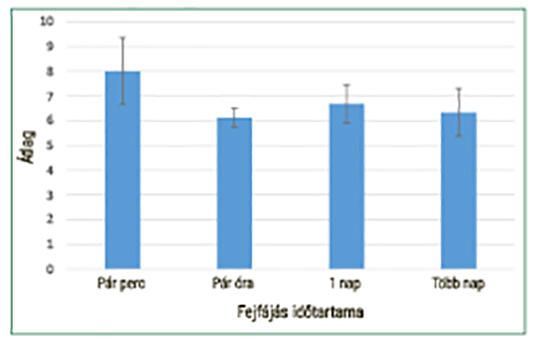[In Hungary at least 3.5 million people had headache. The aim of our research was to acess the occurrence of headaches, causes and symptoms. Quantitative, cross-sectional research was carried between 01.03.2021 and 30.11.2021. The target group is university students aged 18-45 years who have experienced headaches in the last 3 months (n=111). We used self-made and validated questionnaire. Descriptive statistic, two-sample t-test, correlation, ANOVA and Khi-square tests were calculated using SPSS 22.0 program (p<0.05). We detected: 63.06% tension, 8.11% migraines, 4.5% clusters, 24.32% mixed. The intensity of pain is significantly related to the frequency and duration of the appearance of headaches (p<0.05). Pain intensity doesn`t show a significant connection with stress levels, development of sleep disturbance, types of headaches, decreased concentration and learning methods (p>0.05). It can be said that the intensity of pain is influenced by the frequency of the appearance of headaches and the duration of pain.]





COMMENTS
0 comments